Sony Alpha 7 C Full-frame Mirrorless Interchangeable Lens Camera (Compact and Lightweight, Real-time Autofocus, 24.2 Megapixels, 5-Axis Stabilisation System, Large Battery…
Original price was: £1,399.00.£1,199.00Current price is: £1,199.00. Inc. Vat
(-14%)- Professional-quality full-frame camera with a lightweight and compact design
- 24.2 megapixels and 4K video recording capabilities for detailed photos and videos
- Advanced real-time autofocus system with eye-tracking for both humans and animals
- Features in-body image stabilization up to 5 stops and a vari-angle touch screen
- Long-lasting Z battery for extended shooting sessions with improved dust and moisture resistance
- Easy photo transfer via Sony’s Imaging Edge App using Bluetooth
- Continuous shooting speed of 10 fps and ISO range from 100 to 51200 (expandable to 204800)
- Compatible with Sony E series lenses designed for full-frame mirrorless cameras
Product details
Sony Alpha 7 C Full-frame Mirrorless Interchangeable Lens Camera
Experience the Future of Photography with Sony Alpha 7 C
Elevate your photography to new heights with the Sony Alpha 7 C, a compact and lightweight full-frame mirrorless camera that seamlessly combines advanced technology with user-friendly features. Designed for both enthusiasts and professionals, this camera is your perfect companion for capturing stunning images anywhere, anytime.
Key Features
-
Compact and Lightweight Design: Weighing just 424 grams and measuring 6 x 12.4 x 7.1 cm, the Alpha 7 C is one of the most portable full-frame cameras on the market. Take it anywhere without the bulk of traditional DSLRs.
-
Superior Image Quality: With a powerful 24.2 Megapixels sensor, you’ll enjoy breathtaking detail and clarity in your photographs. The full-frame format ensures vibrant colors and stunning low-light performance.
-
Real-time Autofocus: Equipped with 693 autofocus points, the Alpha 7 C uses advanced real-time tracking technology to keep your subjects in sharp focus, whether you’re shooting portraits, landscapes, or fast-moving action.
-
5-Axis Stabilisation System: Say goodbye to shaky images! The built-in 5-axis image stabilization provides smooth and steady results, ensuring your photos and videos maintain their clarity even in challenging shooting conditions.
-
Rapid Continuous Shooting: Capture the action with a continuous shooting speed of up to 10 fps. Perfect for sports and wildlife photography, you won’t miss a moment.
-
Extended ISO Range: With an ISO range of 100-51200 (expandable to 204800), you can confidently shoot in various lighting conditions, from bright daylight to dimly lit environments.
-
Durability and Water Resistance: Designed to withstand the elements, the Alpha 7 C features a water-resistant body, allowing you to shoot in diverse environments without worry.
Specifications
- Package Dimensions: 16.4 x 15 x 12.2 cm
- Package Weight: 1.06 kg
- Brand: Sony
- Included Components: Camera Body Only
- Maximum Shutter Speed: 1/4000 s
- Minimum Shutter Speed: 30 seconds
- Viewfinder Magnification: 0.59x
- Memory Slots Available: 1
- Focus Type: Auto Focus
- Style: Camera Body Only
- Colour: Silver
- Model Year: 2020
- Plug Profile: Tripod
- Zoom Type: Digital Zoom
- Aperture Modes: F5.6
Why Choose Sony Alpha 7 C?
The Sony Alpha 7 C is not just a camera; it’s a gateway to creativity. With its user-friendly interface, extensive features, and exceptional performance, it’s perfect for capturing the world around you in stunning detail. Whether you’re a seasoned professional or just starting your photography journey, the Alpha 7 C is designed to elevate your skills and inspire your artistic vision.
Unlock your potential with Sony Alpha 7 C – where innovation meets artistry!
Additional information
| Package Dimensions L x W x H | 16.4 x 15 x 12.2 centimetres |
|---|---|
| Package Weight | 1.06 Kilograms |
| Product Dimensions L x W x H | 6 x 12.4 x 7.1 centimetres |
| Item Weight | 424 Grams |
| Brand | Sony |
| Camera Lens | The camera lens used for Sony Alpha 7C Body is one of the Sony E series lenses. These lenses are designed for mirrorless cameras with full frame sensor and offer a wide focal length range. It can also offer features such as image stabilizer and low light performance. |
| Colour | Silver |
| Continuous shooting speed | 10 fps |
| Has image stabilisation | Yes |
| Included Components | Camera Body Only |
| ISO Range | 100-51200 |
| Memory Slots Available | 1 |
| Minimum shutter speed | 30 seconds |
| Model year | 2020 |
| Plug profile | Tripod |
| Part number | ILCE7CS.CEC |
| Size | Plein format |
| Viewfinder Magnification | 0.59x |
| Water Resistance Level | Water Resistant |
| Zoom Type | Dijital Yakınlaştırma |
| Expanded ISO Maximum | 204800 |
| Autofocus Points | 693 |
| Focus type | Auto Focus |
| Maximum shutter speed | 1/4000 s |
| Aperture Modes | F5.6 |
| Style | Camera Body Only |
| Maximum Format Size | Full Frame |
| Effective still resolution | 24.2 MP |
| Guaranteed software updates until | unknown |


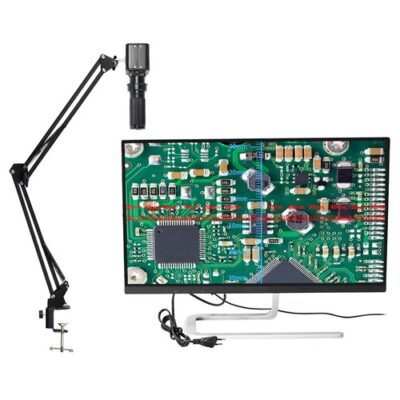






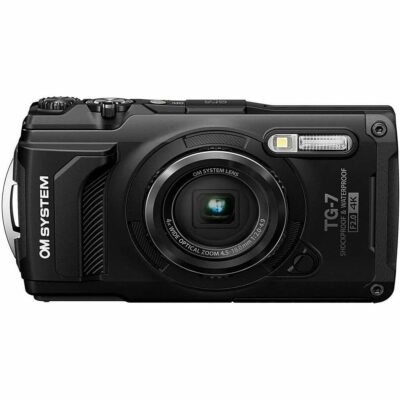
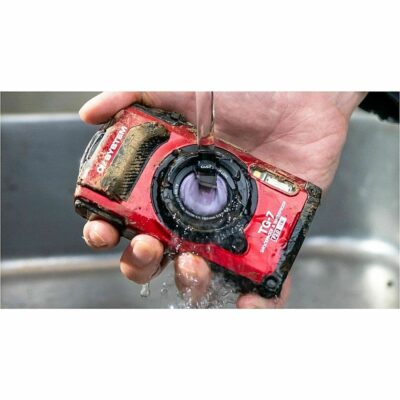
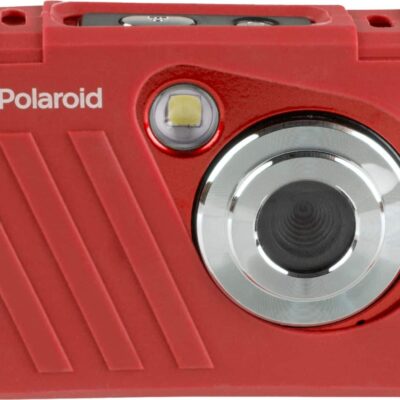
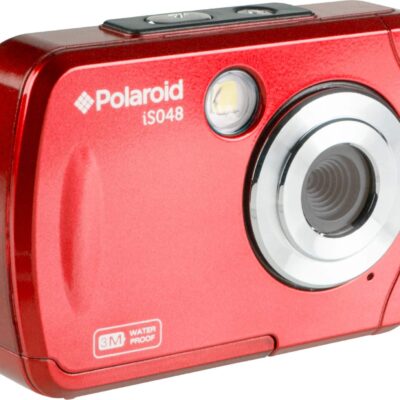
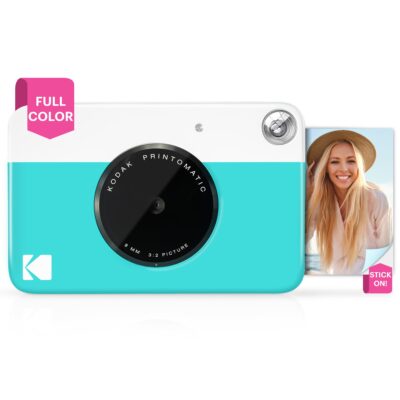


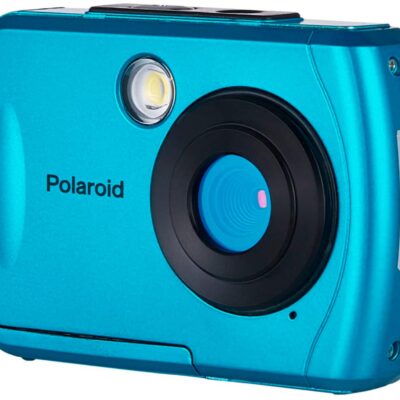

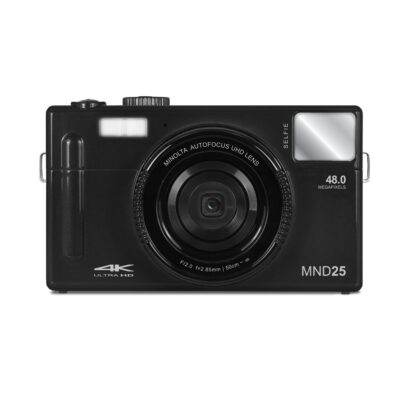
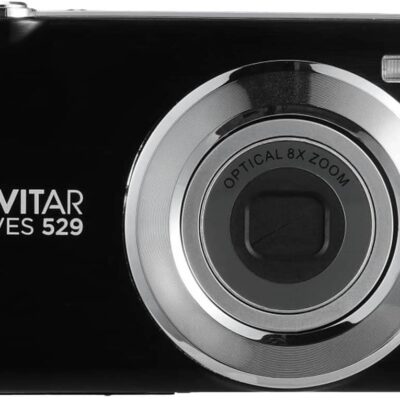
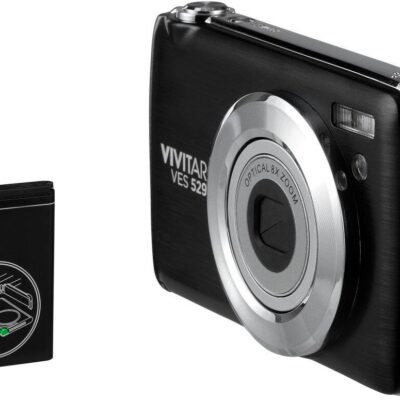
Aidan –
Decent camera for beginners, but doesn’t stand out in any way
Wendy –
Great for portraits, not the best for fast-paced action
Paris –
Build quality is solid, but could be more weather-resistant
Koby –
Exceptional battery life and fast shutter speed
Antwon –
Responsive controls, but touchscreen could be more sensitive
Tate –
Good zoom and clarity, though stabilization could be better
Levi –
Picture quality is impressive, but takes some learning
Daniel Ryan –
Great camera. Excellent photos. Video is okayish for 2022 nothing to write home about.
It is essentially a full frame sensor in a Micro Four Thirds body. This is great but some compromises had to be made.
Those are:
-Small grip (not for people with large hands)
-No Front dial (I wish it had one for adjusting aperture for example or ISO)
-No Joystick for selecting focus point
-Old Sony Menus (and yes they are bad!)
Other than that all good.
Cameranerd99 –
This is a fantastic camera. Battery life also amazing. Does everything really well. Colours are great. 1080p video better than 6300 I was using before. 4K stunning.
Sahil Soni –
It does exactly what you’d expect out-of-the-box; little to no need for customising and configuring the device, albeit, format settings.
It being the predecessor to the A7CII, it doesn’t come with the latest and greatest customisations but it is more than suitable for novice and intermediate photographers and videographers.
However, I would much rather purchase a A6000 or A6400 and use the remainder (and whatever one may have budgeted for a lens) to purchase a fantastic lens. A camera body can only do so much, unless it’s an A7IV or a ZV-E1 (with their superior image stabilisation).
Kallie –
Perfect balance of manual controls and smart features
M&G –
Top notch quality and easy to use. Very lightweight. Viewfinder and screen excellent. Not much it doesn’t do.
Alex –
Was 50/50 about purchasing this camera just on the premise that a newer model may be released sometime in the near future.. but went for it and the quality is everything I will ever need for my set up and the AF is perfection. Great little camera body, (big) pocket friendly.
Dr.A.Dyson –
One of the best compact mirrorless camera on the market , ease of use and good looks, defiantly recommend!
Armando –
Brilliant colors and sharp details in every shot
Dale –
Buttons feel well-placed, but rear dial is a little stiff
Reagan –
Professional-level results with a user-friendly interface
Blair –
Shoots beautifully, just wish there were more frame rate options
Alex –
We returned our G9 (warehouse deal) and invested another £1000 to get this A7C (also a warehouse deal) with kit lens. It’s a lot of money for amateurs like us so
The difference in image quality is easy to see. I’m pretty amazed at the dynamic range you can get, and tons more detail than M4/3 sensor. Photos look pretty great right out of the camera.
In terms of handling, it’s fine. Definitely not as nice as G9, but I think it’s a good tradeoff for getting full frame at this size. We are using this for travel so it’s important to be able to chuck it in a bag and not have it weigh you down.
Oliver Allin –
Amazing bit do kit , used to have canon cameras for years , wanted to jump over to Sony as they are the kings of making things of quality , strong and small !
What really shines for me is the lightweight and most of all the articulated screen . You can take it anywhere and feel comfortable, if for all the faff online with reviewers complaining about the small iris . It doesn’t matter , it’s fine you used the articulated screen for most things .
Battery life is amazing used it for a few days battery still has 18% !! .
Incredible piece of engineering , if your a photographer, but love video and the small body with nothing but the iris downsized .. and that’s it .. GET IT.
Nothing about it feels cheap , one SD card slot .. but really I’ve never had a card corrupt on me , and just carry spares and swap them if you wanna be pedantic about it .
Vida –
Takes great daylight shots, struggles slightly in shadows
S Chandaria –
Ho acquistato la Sony A7C nella sezione Warehouse Deals completa di obiettivo kit 28-60 mm, approfittando di uno sconto irresistibile del 30% disponibile sull’usato in qualche giornata di fine 2022 sul modello di colore nero.
Si tratta di una mirrorless “compatta” a sensore full frame, da me presa con l’idea di sostituire la mia A7II, che purtroppo non uso più tanto non perché non valida, ma a causa del suo ingombro e poca comodità nel trasportarla.
Devo dire che la A7II, sebbene abbastanza datata, ha grandi potenzialità tecniche grazie al sensore full frame di alta qualità, la stabilizzazione in-body, il discreto grip, la serie di rotelle di regolazione al volo dei parametri principali.
Infatti grazie al sensore FF da 24 megapixel posso ottenere:
– un’eccellente risoluzione anche per qualche stampa ritagliata, per lasciare qualche ricordo tangibile e duraturo, dato che le foto dei cataloghi digitali sono comode da archiviare a centinaia e anche migliaia, ma alla fine con la loro immaterialità si perdono;
– il giusto stacco del soggetto rispetto all’ambiente sullo sfondo anche senza necessità di obiettivi particolarmente luminosi e quindi ingombranti e costosi;
– un rumore da alti ISO non troppo elevato, per foto passabili alla sera anche senza flash o illuminazioni strutturate (e qui qualsiasi professionista avrà ben chiara la mia competenza tecnica praticamente inesistente).
Si tratta di ottime qualità per essere un’eccellente fotocamera per uso casual e in particolare per foto all’aperto, di giorno o la sera, dei miei famigliari. Però trattandosi di foto da scattare in presenza di figli ancora piccoli, l’integrità della A7II è sempre a rischio, pertanto devo viaggiare con custodia, ma per quelle dimensioni, soprattutto a causa della “torretta” del mirino, non ho trovato mai uno dei gusci di stoffa/neoprene piuttosto aderenti (tipo quelli della Megagear) ed abbastanza protettivi, ma solo le borsette del tipo a pozzetto (ce ne sono di Amazon Basics e altre marche), sicuramente molto più protettivi, ma estremamente ingombranti e che non agevolano la facile e rapida estrazione della fotocamera… il tutto dovrebbe avvenire mentre si accompagnano dei bambini a fare due passi in un parco, in una passeggiata.
A me è sempre risultato molto scomodo e infatti la A7II sta “facendo le ragnatele”.
Per risolvere questa situazione ho acquistato quindi la A7C, in modo da mantenere tutti i vantaggi qualitativi della A7II, il tutto in un corpo più piccolo, adattabile in una custodia pure compatta che entri nel tascone di un giubbino invernale, per avere la portabilità necessaria e l’immediatezza d’uso necessaria estrarla nel momento giusto per cogliere qualche attimo speciale nelle foto familiari: questo per applicare il fondamentale principio che la migliore fotocamera è quella che porti con te.
Sembra quasi di avere in mano un’APS-C…. beh no, almeno per me che preferisco le fotocamere compatte, nella categoria APS-C apprezzo ancora due vecchiette come la Canon EOS M100 (o 200) e la Sony A5100 che sono microscopiche rispetto a questa Sony full-frame pur avendo in corpo dei sensori di tutto rispetto. Di certo chi è abituato a marche come Fuji o Panasonic, che amano le taglie esterni grandi anche quando i sensori non lo sono tanto, invece noterà le dimensioni non esagerate di questa fotocamera Sony in rapporto alla dimensione del sensore.
Relativamente alla qualità della A7C va evidenziato che è prodotta a partire dal 2020, ben 6 anni dopo la A7II, e in questo lasso di tempo le qualità tecniche sono state tutte incrementate da Sony: autofocus, sensori con doppio circuito di amplificazione per i bassi e gli alti ISO per diminuire il rumore ad alti ISO, ecc., mentre la riduzione di volume ha determinato la minore dimensione del mirino, conservando lo stesso numero di ghiere (rotelle di regolazione diretta parametri) e perdendo un paio di pulsanti custom di cui non sentirò la mancanza, quindi perdendo poco o nulla in termini di immediatezza e facilità di uso.
Entrando nel dettaglio, mi addentro subito nei punti critici:
– la A7C ha la struttura di magnesio che è robusta ma anche pesante, più pesante della A7II che è fatta prevalentemente di plastica rinforzata, questo fa una gran bella impressione in termini di solidità e qualità dell’acquisto, ma anche un po’ impressione nell’impugnarla visto che la pesantezza va contro la maneggevolezza e prontezza d’uso.
– il corpo è spesso, come la A7II, serve per alloggiare in tutta sicurezza il sensore full-frame con l’IBIS antivibrazone, e realizzare la sede dello schermo estraibile, anche questa caratteristica fa a pugni con la maneggevolezza
– la sporgenza sagomata per la presa con la mano destra (“grip”) non sporge così tanto rispetto al corpo massiccio, meno della A7II ed è meno largo, pertanto si regge con la mano con un certo grado di insicurezza, a fronte di un peso importante;
– ancora sulla presa sagomata, la superficie è elegante, in materiale plastico presumo, che ha una finitura che richiama una pelle aderente e sottile su cui sono praticate una miriade di piccole fossette, dovrebbe servire per creare aderenza, ma il risultato finale è che sembra piuttosto liscia. La A7II ha finitura in plastica rugosa migliore per l’attrito con la pelle delle dita e quindi l’efficacia del grip
– il mirino non è soltanto piccolo, e forse non sarebbe un problema così insormontabile, ma soprattutto al posto della sporgente, morbida e spessa gomma di appoggio sull’orbita dell’occhio che si trova sulla A7II (il cosiddetto “eye-cup”), presenta una superficie non sporgente e dura, che non si conforma alla superficie dell’orbita, anzi ci va a sbattere facendo un po’ male all’occhio stesso, insomma una mezza schifezza, che rende il mirino stesso scomodo (luce esterna che arriva all’occhio, appoggio che indolenzisce l’orbita);
– lo schermo, essendo snodato con cerniera laterale, per essere inclinato richiede di essere prima ribaltato a sinistra del corpo macchina e puoi ruotato secondo l’inclinazione voluta. Siccome non faccio video o tanti selfie, mi risultava molto più immediato nell’uso lo schermo vecchio stile della A7II, che rimaneva addosso al corpo macchina e ruotava solamente, verso il basso (per vedere l’anteprima quando la fotocamera è sopra la testa) e verso l’alto (quando la fotocamera deve stare all’altezza delle gambe)
La soluzione parziale ad alcuni dei problemi sopra elencati è data da un guscio in silicone che ho subito acquistato, aumenta un po’ lo spessore complessivo del corpo, azzera l’eleganza della A7C, ma almeno dà una superficie di appoggio morbida per le mani, anche se non appiccicosa, quindi migliora la presa e in più introduce un elemento protettivo almeno contro i graffi e forse i piccoli colpetti.
Per l’oculare si trova in commercio una soluzione ingegnosa, una staffetta plastica che si innesta nella slitta flash (un dilettante come me ne che non controlla l’illuminazione può fare a meno) e che porta un profilo in gomma che copre sopra e ai due lati l’oculare del mirino, creando la sede per l’appoggio dell’occhio. Peccato che i modelli che si trovano hanno una sagoma di questa gomma molto sporgente, anche in maniera eccessiva per l’effettiva utilità, ma soprattutto il profilo non è spesso (servirebbe fosse “cicciotto”) per cui appoggiando l’orbita dell’occhio il contatto di questa gomma non dà un feedback di morbidezza, tutt’altro, non viene voglia di spingere per far aderire meglio la gomma sulla pelle e quindi chiudere completamente l’accesso alla luce esterna.
Insomma non sono ancora arrivati ancora alla soluzione perfetta e va aggiunto che questo eye-cup non è perfettamente compatibile con il guscio in silicone che, a causa della staffa innestata nella slitta flash, in quella zona non appoggia bene sulla superficie della fotocamera, ma è soprattutto una problema di estetica non gradevole che è ampiamente superato dalla funzionalità che viene assicurata.
Una volta accesa la fotocamera, tutti i difettucci spariscono a fronte della bontà delle funzioni fotografiche vere e proprie (a parte il mirino che, senza eye-cup acquistato a parte,è letteralmente peggio di un pugno in un occhio):
– la regolazione dei parametri molto facile, per me che lavoro in manuale con Auto-ISO, grazie alle due rotelle presenti per cambiare apertura e tempi;
– l’ autofocus è eccellente, inoltre si può facilmente impostare l’uso del pad/rotella posteriore insieme al pulsante centrale per spostare i punti di messa fuoco in luogo del joystick che non c’è;
– lo schermo (o il display del mirino) visualizza bene le info necessarie per comprendere preventivamente quale sarà il risultato dello scatto (griglia dei terzi, livella, istogramma, fasce zebra per le alte luci);
– la stabilizzazione mi pare che faccia un discreto lavoro, non ho una mano fermissima, il sistema aiuta anche se non c’è una misurazione delle vibrazioni in atto;
– le immagini sono di qualità eccellente per nitidezza e colori, questo è merito della risoluzione del sensore 24 Mpix che è veramente buona ma non eccessiva, visto che quando si va oltre 30 fino ai 50 megapixel di risoluzione presenti su alcuni sensori Full-Frame più recenti, per ottenerli effettivamente sull’immagine occorre utilizzare obiettivi importanti e se sono zoom gli obiettivi sono sicuramente cari e ingombranti, secondo me non in linea con le dimensioni relativamente compatte e il piccolo grip per la mano di questa A7C
– l’obiettivo in kit 28-60mm non è luminoso (va da f/4 a f/5.6), ma in esterno e di giorno si difende ed è rapido nell’autofocus oltre che piccolo (da chiuso, va esteso manualmente per iniziare a scattare) e leggero, ideale in abbinata a questa full-frame compatta. Detto questo comunque gli preferisco degli obiettivi a focale fissa che pure sono compatti e assicurano maggiore apertura (anche qui emerge la mia natura di principiante, visto che i professionisti vogliono avere il controllo della profondità di campo e non disdegnano certo di scattare ad f/8 o a diaframma ancora più chiuso se la composizione fotografica lo richiede).
In conclusione la A7C è una bella e validissima fotocamera che consiglio, visto che è ancora più apprezzabile in questo periodo nel quale è acquistabile a prezzi un po’ scesi per effetto dell’arrivo del nuovo modello A7C II da 33 Mpix.
E’ infatti possibile risparmiare fino a 900 euro rispetto al nuovo modello (risparmio utile da spendere in obiettivi di qualità), se si cerca un usato di Warehouse Deals (Seconda Mano) che è sempre un punto di forza da parte di Amazon.
Kayden –
Nice compact design, but lacks some advanced features